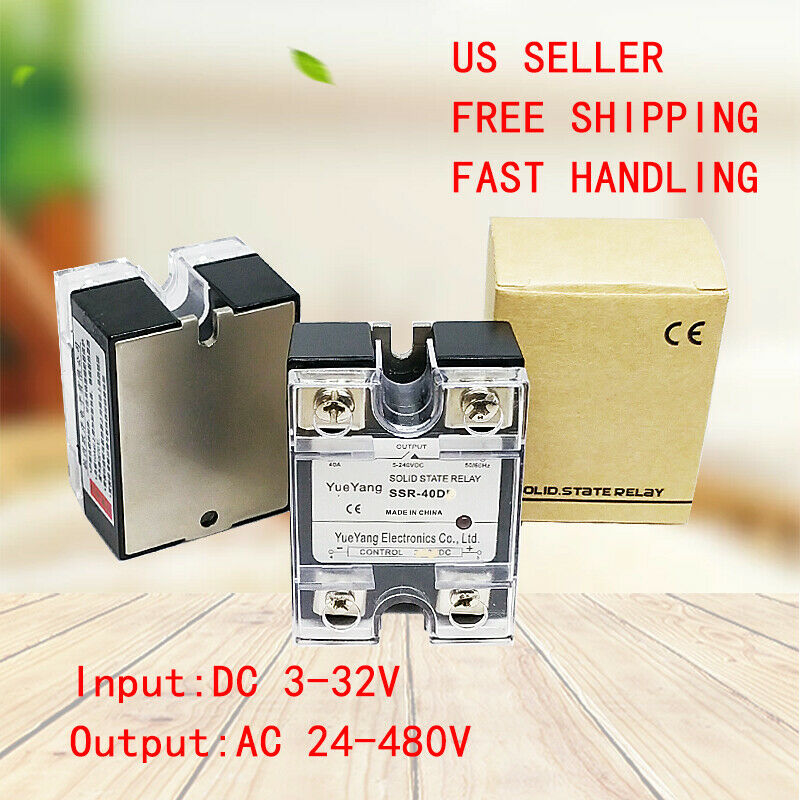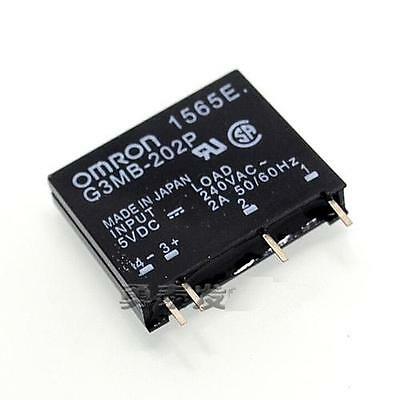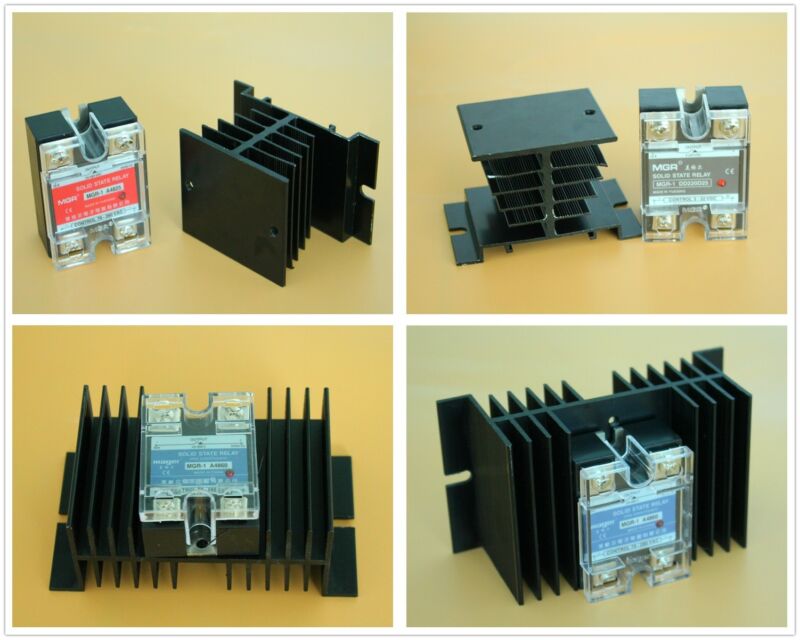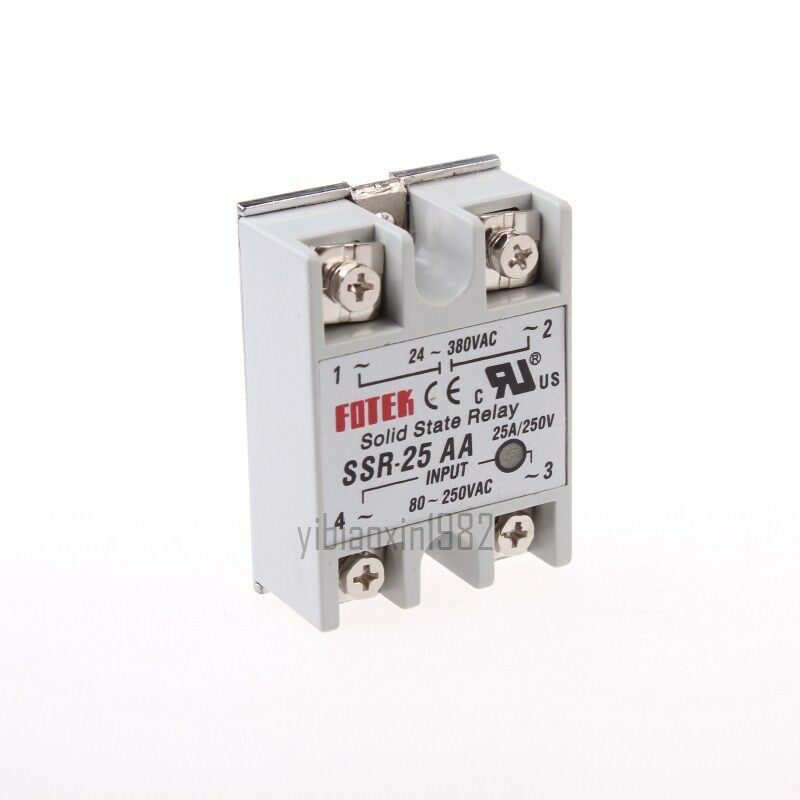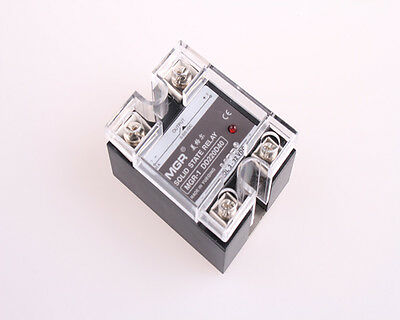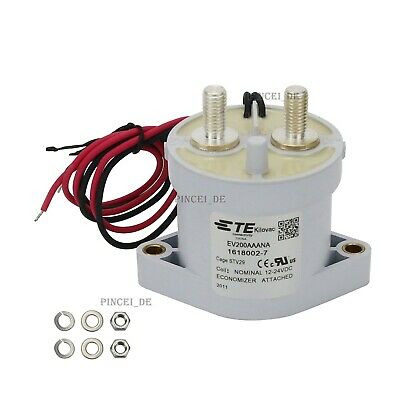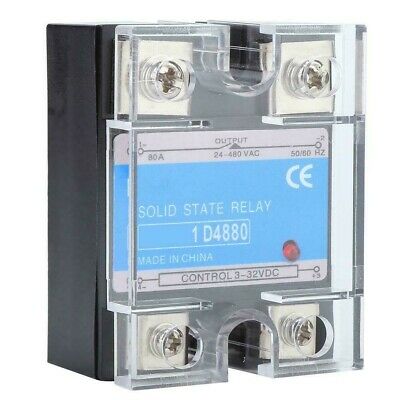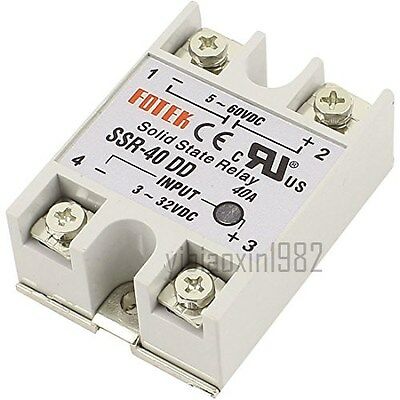-40%
New Crydom D1210 Solid State Relay, Control: 3-32VDC, Contacts: 120VAC 10A
$ 2.1
- Description
- Size Guide
Description
Crydom D1210 Solid State RelayControl: 3-32VDC
Contacts: 120VAC 10A.
Specifications:
Model #
: D1210
More Information
:
New "Old Stock" Solid State Relay
Control Voltage: 3-32VDC
Operating Voltage Rating: 120VAC
Amperage: 10A
Why Use Solid State Relays?
As
the
name
indicates,
a solid
state
relay
is
an
electrical
switch
comprising
solid
state
or
electronic
components.
Owing
to
their
nature,
solid
state
relays
contain
no
moving
parts.
Because
no
mechanical
contacts
are
opened
or
closed
within
the
relay,
there
is
no
arcing
or
pitting
of
contact
surfaces,
thus
no
wear-out
mechanism.
As
a result,
solid
state
relays
can
operate
for
many
millions
of
turn
on/turn
off
cycles
with
no
deterioration
in
performance.
In
addition,
with
no
mechanical
movement
inside,
accoustical
noise
is
eliminated.
A
big
advantage
in
power
cabinets
that
can
contain
dozens
of
relays.
AC
output
solid
state
relays
are
used
to
control
the
flow
of
electrical
energy
in
alternating
current
power
systems.
The
control
(equivalent
to
electro-mechanical
relay
coil)
voltages
can
be
either
AC
or
DC.
The
majority
of
solid
state
relays
require
much
less
power
than
electro-mechanical
types
to
turn
them
on
and
are
easily
interfaced
to
PLCs.
For
example,
solid
state
relays
can
be
constructed
to
turn
on
with
a
control
current
as
low
as
1 milliAmp,
although
5 to
15
milliAmps
is
more
typical
for
most
standard
types,
at
control
voltages
as
low
as 3 Vdc.
Another
advantage
of
having
no
moving
parts:
solid
state
relays
offer
a very
fast
response
time
with
absolutely
no
contact
bounce.
For
instantaneous
turn-on
types,
the
time
between
applying
a command
signal
to
the
control
circuit
and
the
output
circuit
turning
on
is
typically
20
microseconds,
although
usually
this
time
is
specified
at
100
microseconds.
Alternatively,
because
of
the
nature
of
the
electronic
control
circuitry,
it is possible
to
delay
the
turn-on
of a solid
state
relay
until
the next voltage zero of the AC supply.
This
enables
AC
output
solid
state
relays
with
two
types
of
turn-on
response:
instantaneous
(also
known
as
phase
control
or
random
turn-on)
and
zero
cross
(where
the
solid
state
relay
will
turn
on
at,
or close to, AC supply voltage zero).
All
AC
output
solid
state
relays
– which
use
Silicon
Controlled
Rectifiers
(SCRs)
or
triacs
as
the
output
switch
– will
turn
off
at
the
next
zero current,
after
the
removal
of
the
control
signal.
The
relay
may
conduct
for
an
additional
half
cycle
of
the
AC
supply
frequency
if the
control
signal
is
removed within 200 microseconds of the
next zero current.
Because
of
the
response
time
of
solid
state
relays,
power
to
a
load
can
be
applied and removed very precisely.
This
is
especially
important
when
applications
involve
the
switching
of highly
capacitive
loads,
and
a major
advantage
over electro-mechanical switching





